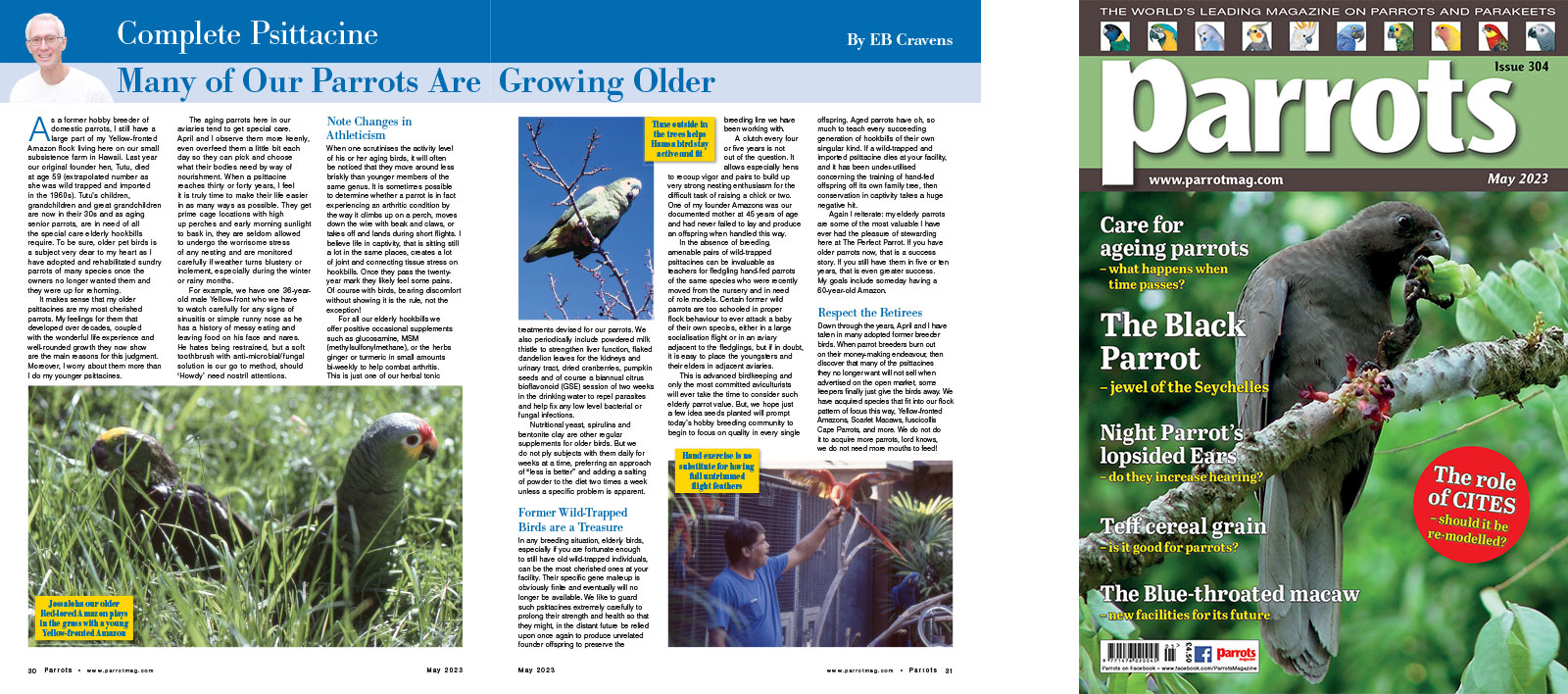
Complete Psittacine by Eb Cravens
As a former hobby breeder of domestic parrots, I still have a large part of my Yellow-fronted Amazon flock living here on our small subsistence farm in Hawaii. Last year our original founder hen, Tutu, died at age 59 (extrapolated number as she was wild trapped and imported in the 1960s). Tutu’s children, grandchildren and great grandchildren are now in their 30s and as aging senior parrots, are in need of all the special care elderly hookbills require. To be sure, older pet birds is a subject very dear to my heart as I have adopted and rehabilitated sundry parrots of many species once the owners no longer wanted them and they were up for rehoming.
It makes sense that my older psittacines are my most cherished parrots. My feelings for them that developed over decades, coupled with the wonderful life experience and well-rounded growth they now show are the main reasons for this judgment. Moreover, I worry about them more than I do my younger psittacines.
The aging parrots here in our aviaries tend to get special care. April and I observe them more keenly, even overfeed them a little bit each day so they can pick and choose what their bodies need by way of nourishment. When a psittacine reaches thirty or forty years, I feel it is truly time to make their life easier in as many ways as possible. They get prime cage locations with high up perches and early morning sunlight to bask in, they are seldom allowed to undergo the worrisome stress of any nesting and are monitored carefully if weather turns blustery or inclement, especially during the winter or rainy months.
